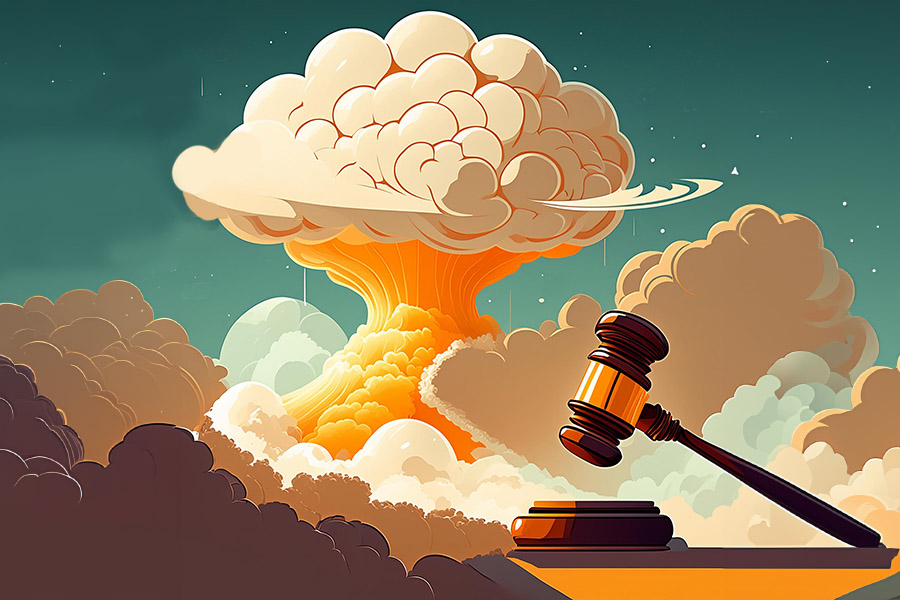June 8, 2007
Theodore Postol and James Goodby
New York Times
PALO ALTO, California — President Vladimir Putin’s compromise proposal to President George W. Bush concerning the U.S. ballistic missile defense system currently slated to be installed in Poland and the Czech Republic makes very good sense.
By using a Russian early warning radar in Azerbaijan, the United States would have the ability to track and engage all Iranian long-range missiles launched against both the East and West Coasts of the United States, thus turning the barrel of the U.S. missile defense away from Russia and directly and unambiguously onto Iran.
In addition, if the Russians let the United States place the radar it now intends for the Czech Republic in Azerbaijian, the U.S. and Russian radars could work together to provide an extremely potent radar tracking capability for a U.S. missile defense aimed exclusively at Iran.
Putin has given Bush something serious to think about before the two meet again in Kennebunkport.
Putin’s analysts certainly told him that the American radar in the Czech Republic would be able to observe and track essentially all intercontinental ballistic missiles launched from Russia towards the East Coast of the United States.
He would also have been told that the radar is designed so that its power can be enormously increased over time, giving it greater and greater capabilities to track more and more Russian ICBM warheads and decoys as time goes on.
That radar could be immensely more powerful 10 years after it was first deployed even though its exterior appearance would not change at all.
Putin also would have been told that the United States is continuing to develop the THAAD (Theater High Altitude Area Defense) missile defense system. He would be told that each battery of THAAD interceptors has a powerful radar that is very capable but much smaller than the radar being considered for deployment in the Czech Republic.
THAAD radars deployed in the United States would not, by themselves, be able to search large areas of sky at long range for Russian warheads.
But since the tracking data from the Czech radar would remove the need for them to search large areas of sky the THAAD radars could be changed to acquire and track Russian missiles at long range.
That would mean that 1,000 or more THAAD interceptors could be, in principle, eventually used as part of a U.S. national missile defense system aimed at Russia.
To clinch the argument, Putin’s advisers would tell him that the United States is also planning to build second-generation THAAD interceptors.
These upgraded interceptors are supposed to be even more capable of intercepting Russian ballistic missiles.
Should Putin have taken this worst-case scenario so seriously that he would risk wrecking the prospects for U.S.-Russian partnership in many other areas of great significance for global security?
Of course not. All political leaders know that sub-cultures of military professionals have as their main task considering how to fight a war successfully and how to counter the moves of other countries.
Never in the Cold War did an American or Soviet leader come close to unleashing a nuclear attack. And now the relationship between Washington and Moscow, although competitive in many respects, is not about to collapse into conflict.
But lest we conclude that the Russian president had foolishly lost his cool, consider the logic of American thinking when faced with an ineffective, non-threatening Soviet ballistic missile defense system in the early 1980s.
A recently declassified National Intelligence Estimate of that era concluded that the Soviet system presented no real threat. Still, the American analysts were forced, by the nature of their trade, to speculate on what the Soviets were trying to achieve, what might they do next, and so on.
Some of the analysts worried that the Russians might be planning to use upgraded radars so that thousands of otherwise incapable air-defense interceptors could be used to engage American ballistic missiles.
It did not matter that the whole plot of the story was technically outlandish. The issue that gave the analysts pause was how to explain such irrational actions on the part of an adversary and what this signified about other actions this unpredictable government might take.
Sound familiar?
The bottom line is that America and Russia have not yet escaped from the trap of mutual nuclear deterrence built during the decades of the Cold War. Until they do, irrational and sometimes dangerous reactions will continue to occur.
Leaders on both sides would be well advised to focus on the roots of the problem, not its superficial manifestations.
Theodore Postol is professor of science, technology and national security policy at the Massachusetts Institute of Technology. James Goodby, a former U.S. ambassador, was special representative of the U.S. President for nuclear security and dismantlement in 1995-96.
Jonathan Granoff is the President of the Global Security Institute, a representative to United Nations of the World Summits of Nobel Peace Laureates, a former Adjunct Professor of International Law at Widener University School of Law, and Senior Advisor to the Committee on National Security American Bar Association International Law Section.








